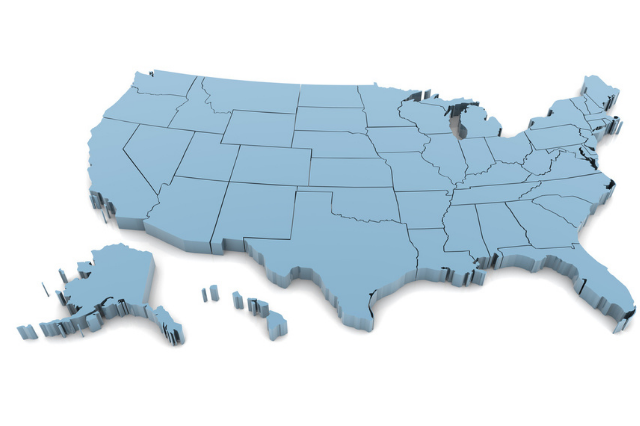News
Fall 2024 Federal Regulatory Update

September 6, 2024 – Earlier this year, ASAM previewed the federal regulatory agenda and its potential impacts on clinicians in the addiction medicine field. Eight months later, we are here to give a status update on where things stand headed into the fall.
DEA Telemedicine Rule: We start off this update with a look at where things stand with the DEA’s rule on using telemedicine to treat patients with opioid use disorder (OUD). When we checked in last time, we noted that the rule had not yet gone to the Office of Management and Budget’s (OMB) – the last stop before a rule gets published for comment. As of this update, OMB has the rule and has been reviewing it since June. The expectation is that this rule could drop any day now.
It is important to note that these telemedicine flexibilities are currently set to expire in December 2024, raising questions about whether DEA can finalize a rule ahead of the expiration of these temporary rules, or whether there needs to be another extension of temporary rules.
Suspicious orders: DEA-registered manufacturers and distributors must report “suspicious orders,” including unusual sizes, patterns, or frequencies of orders of controlled substances to the DEA and relevant division offices. In 2023, the DEA clarified that neither the DEA, nor the CSA as amended in 2018, regulates the volume of controlled substances with quantitative thresholds that limit registrants’ ordering or dispensing, but rather requires registrants to design and operate a system to identify suspicious orders, which may involve the use of self-set purchasing thresholds.
Notably, DEA does not have a definition of what constitutes a “suspicious order” in federal rules. The only reference to it is in DEA guidance. Despite a proposed rule that was issued in 2020 and then reopened in 2021, DEA has yet to finalize a rule defining what constitutes a suspicious order. The federal unified agenda indicates that the DEA could finally act to finalize a definition by April 2025. Given the issues patients continue to face with accessing their buprenorphine prescriptions from retail pharmacies due to issues related to suspicious orders and the deadliness of the overdose crisis, ASAM and others have asked DEA to stop enforcing these requirements related to buprenorphine for the treatment of OUD in the meantime.
Confidentiality of Patient Records: Soon after our regulatory update in January, the US Department of Health and Human Services (HHS) finalized rules regarding the confidentiality of patient records for patients treated for substance use disorder (SUD). ASAM joined these comments following the release of the final rule.
Changes to Federal Methadone Rules: The Substance Abuse and Mental Health Services Administration (SAMHSA) also released a final rule that revises certain treatment standards for the use of methadone in opioid treatment programs (OTPs) just after our last update earlier this year.
SAMHA has a list of frequently asked questions and a list of changes made the rule available .
Rules to Prohibit Menthol and Ban Flavors in Cigars
Following proposed in cigarettes and separate proposals to prohibit all characterizing flavors in , final rules remain on hold at OMB. It is unclear whether these will be released before the end of the year. It has been reported that on whether or not to finalize the rules.
Coverage of Over the Counter (OTC) Products for Tobacco Cessation/Use Disorder (TUD)– As we noted earlier in the year, HHS issued a request for information (RFI) in 2023 regarding coverage of OTC products, including for tobacco cessation/use disorder without patient cost-sharing. HHS was of the thought that federal statute would allow this change. ASAM submitted to HHS supporting the removal of barriers to smoking cessation products with a goal to provide more people access to these tools. ASAM also urged HHS to consider the key role of clinicians in screening for and treating TUD, noting that efforts to expand access to OTC products should not subvert the critical patient-clinician relationship.
HHS has not taken any steps to propose any regulatory changes in response to comments on the RFI.
Contingency Management – In the last edition, we hinted at potential federal regulatory action this year to reduce barriers to effective contingency management (CM). At the time, those actions were slated for August 2024. Now that summer has come and gone, the federal unified agenda now list regulatory action for November 2024.
As part of the Consolidated Appropriations Act, the HHS Office of the Inspector General (OIG) was required to produce to Congress and consider proposing a safe harbor for evidence-based CM incentives, which would include any parameters for such a safe harbor. It remains to be seen if we will see a proposed rule on CM this year.
Medicare Physician Fee Schedule (MPFS) – The Centers for Medicare and Medicaid Services (CMS) issued its proposed rule in July 2024 governing policies and valuation of services under the fee schedule that determines payment for individual clinicians.
Among other comments, ASAM recommended revisions to proposed digital mental health treatment codes, adoption of payment/coverage of intensive outpatient (IOP) treatment in standalone settings, and welcomed a proposal to allow people on bail, parole, probation, home detention, or in halfway houses to qualify for Medicare coverage. ASAM’s full comments on the rule can be found here and you can find ASAM’s full rundown of everything in the MPFS here.
Mental health and Addiction Parity – According to OMB, final rules implementing changes to federal rules regarding mental health/addiction parity could be released soon. These rules have been under review at OMB since early July 2024.
This rule would clarify insurers obligations under the law, promote compliance with the Mental Health Parity and Addiction Equity Act (MHPAEA), and update requirements to consider experience with MHPAEA in the years since the rules were initially finalized. The rule would also finalize new regulations implementing amendments to MHPAEA recently enacted as part of the Consolidated Appropriations Act, 2021 (CAA, 2021) that require group or individual health insurance plans that include both medical/surgical benefits and mental health or substance use disorder benefits and impose non-NQTLs on mental health or substance use disorder benefits to perform and document their comparative analyses of the design and application of nonquantitative treatment limitation (NQTLs).
Subscribe to The ASAM Advocate so you can stay in the know!






